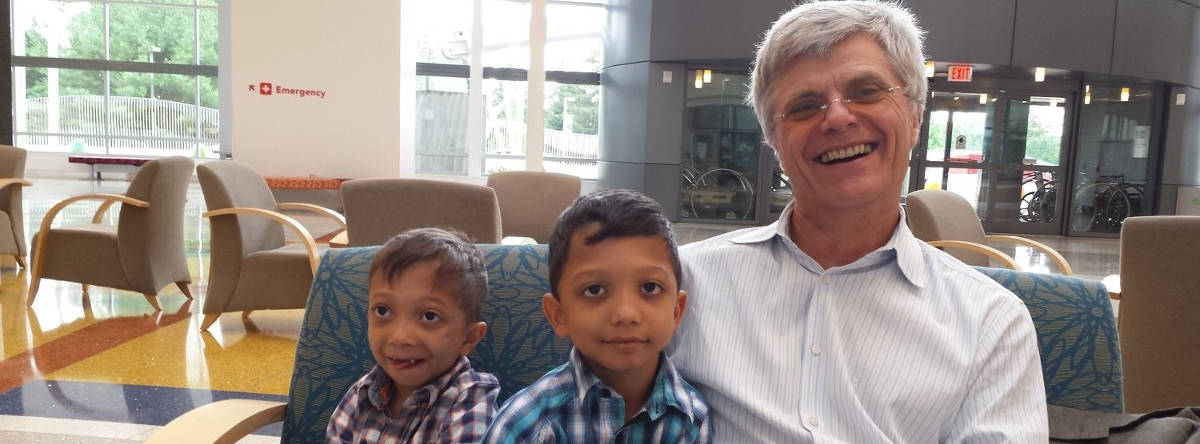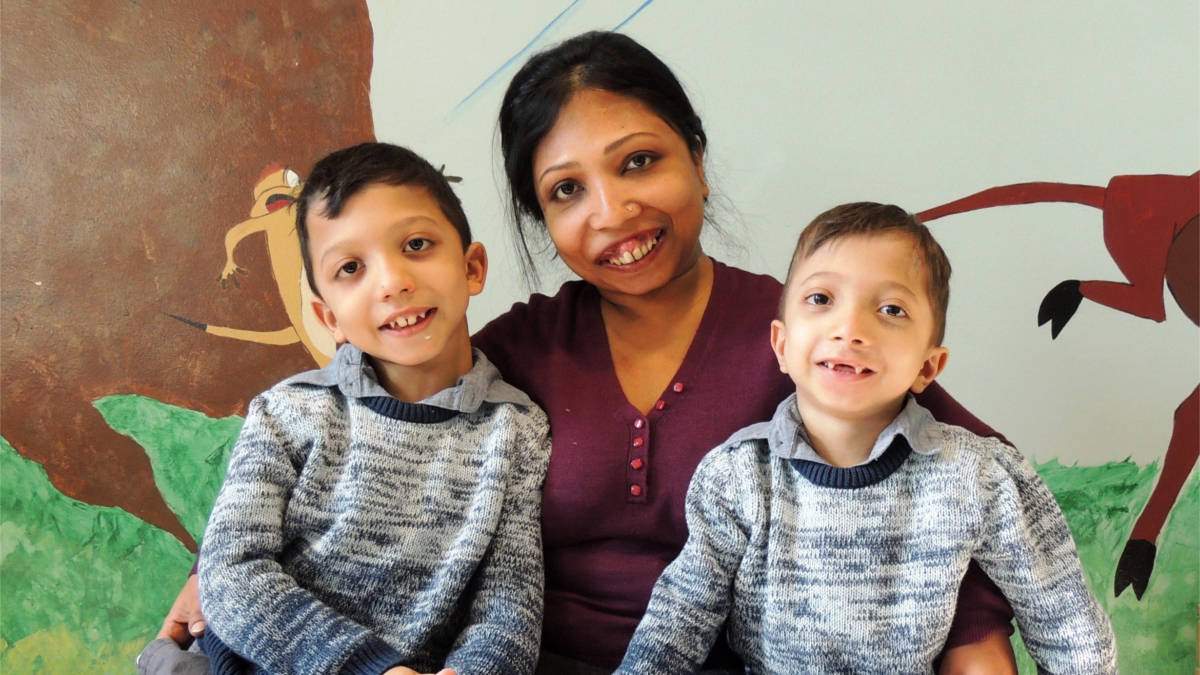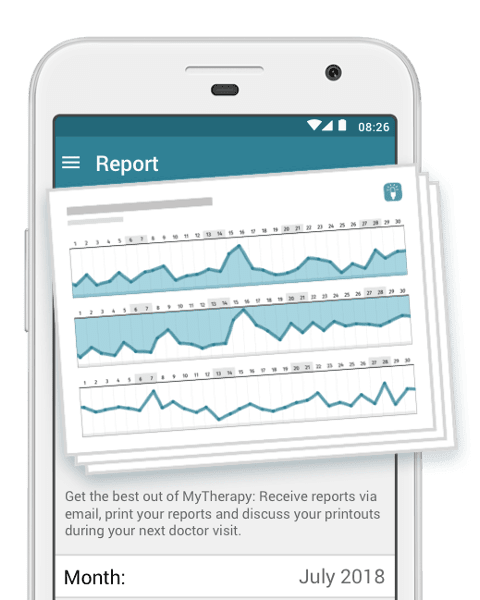Such is the rarity of Jansen's metaphyseal chondrodysplasia (JMC), the number of letters in its name is greater than the number of known cases worldwide. Neena Nizar and her two sons, Arshaan and Jahan, account for 10% of those cases. Neena is the founder of The Jansen’s Foundation, an organization committed to accelerating research into JMC and the other ~7,000 known rare diseases. With World Rare Disease Day on the horizon, Neena shares her family’s story with us and explains why advocacy work is so important.
A guest post by Neena Nizar
Living with a Rare Disease: Starting a Family
In 2008, Adam and I were planning to start a family. At the time, we were plagued by uncertainty and fear. Dozens of corrective surgeries from an unknown skeletal dysplasia had left my body weak, and I wondered if parenthood was even a possibility.
We were heart-broken by the grim conclusions we received: you will never have a child; if you do, your legs will break out from under you; the child will not make it to term. I painfully recalled this fear as a strong contender for never wanting to marry. Then, Adam had said: “You have to give love a chance.” Now, too, he was quick to comfort me: “Anything is possible if God wills it.”
True enough, on July 3rd 2008, I delivered a beautiful baby boy. We named our 8lb cherub Arshaan, Persian for, ‘A Good Man’.
For the next two years, we basked in watching our little one achieve all his milestones. Talking at 9 months, walking at a year. It was clear Arshaan had taken after me with his big expressive eyes, but there was no sign of any disease in his body.
But all that changed when our boy turned two. Almost overnight, we began to see little worries creeping up: widening ankles and wrists, narrowing of the chest. We took him to a doctor who assured us, “it was all in your mind”.
By May 2010, we were preparing to welcome a second baby into our lives. But the fourth month ultrasound revealed “limbs about 6 weeks off”. Suggestions were made to end the pregnancy.
However, we stood firm in our faith; we were going to love our baby no matter what.
Arshaan was now walking with a distinct waddle. There was marked swelling in his knees, and his once long pointy fingers now looked choppy and weak.
I started digging up my old medical records to see if there was something that could lead us in the right direction. However, the deeper I went, the more I was convinced we were dealing with something so confounding and mysterious it would take a true miracle to find the truth.
Every ultrasound of our new guy filled us with worry. I knew if we remained in Dubai, I would lose my mind. I decided to quit my job as a high school teacher and travel back home to India. The next seven months were a blur.
On October 14th 2010, I gave birth to Jahan, Persian for “Savior”.
Amidst the quiet celebration, we hustled. We raced to find answers. In sheer blindness, we groped at endless hours with experts the world over. The reply was always the same: “We don’t know what’s going on with your boys.”
After endless dead ends, I was ready to give up. But we made one last attempt.
Other posts you may be interested in on the MyTherapy blog:
- Ehlers-Danlos Syndrome: My Battle with a Rare Disease
- Twenty-One Going on Fifty: Life with Ehlers-Danlos Syndrome
“I Think I Know What You Have!” – The Diagnosis of Jansen’s
After travelling 7 hours by car and sitting in a hot and humid waiting room for nearly 5 hours, we walked into the consulting room of Dr. Sheela Nampoothiri, a pediatric geneticist from Amrita Institute of Medical Sciences in Kochi, South India.
Dr. Nampoothiri took one look at our x-rays and very calmly said: “I think I know what you have!”
The news was like bright rays of sun searing my eyes, exploding storms.
Dr. Nampoothiri had specialized in orthopedics in Germany, where her professor had shown her a slide of a patient with Jansen’s Metaphyseal Chondrodysplasia. The professor had skipped quickly past the slide saying: “this is so rare… you will never come across a case in your lifetime.”
But she did come across it. She was looking at not one case, but three! From the streaky nature of Jahan's x-rays, she knew instantly that my boys and I had Jansen’s Metaphyseal Chondrodysplasia, an extremely rare progressive skeletal condition that affects only 30 cases worldwide.
After 32 years of living with a misdiagnosis of ‘rickets’, ‘vitamin D deficiency’ and an overwhelming number of I don't knows, we were able to name the enemy!
That November night, I Googled the words “Jansen’s” and found Little Levi, a 4-year-old boy in Mississippi, who was also diagnosed with Jansen’s. The chance discovery began a beautiful friendship between three young boys on a miraculous journey.
Armed with this new knowledge of a confirmed genetic diagnosis, we decided to return to America and seek treatment and a better quality of life for our boys.
In March of 2015, we met with the brilliant orthopedic surgeon, Dr. Mackenzie of Nemours/Alfred I. duPont Hospital for Children, Delaware. By then, the boys’ legs were so bent up, surgery was inevitable.
In July, both boys underwent bilateral osteotomies and corrective surgeries to fix their lower legs. The results were unbelievable.
But the results were short lived and as new bone formed, the bends were back with a vengeance. The surgeries were only temporary solutions to the symptoms of this relentless condition. We needed to find a cure.
Investigating everything available on the Jansen’s led us to Dr. Harald Jueppner, a pediatric nephrologist at Massachusetts General Hospital.
Dr. Jueppner had been researching Jansen’s for 20 years, but never met a patient with the condition.
In February of 2016, at the Rare Disease Conference at Capitol Hill, he met me.
The meeting was monumental for both doctor and patient. We were excited to learn of all the wonderful work Dr. Jueppner and his team had been doing and were totally taken aback to learn about the Jansen’s mice he had in his Boston lab!
Now we could directly help with his research by providing valuable data via blood tests and lab work, and in November we travelled to UCLA to give sample bone and cells in order to better understand the condition.

Living with Jansen’s: Looking Ahead
Living with an extremely rare condition can mean never fully sleeping at night. There is a constant anguish deep within.
Simply getting to a diagnosis of a rare disease can be a complicated, lengthy, and frustrating journey for people because many health care providers may have limited experience with the identification and diagnosis of rare diseases. Also, diagnosis before symptom onset or diagnosis early in the disease can be challenging.
However, a time of progress and hope is upon us. Biopharmaceutical researchers have leveraged new technologies and the growing scientific understanding of many rare diseases to develop groundbreaking therapies over the last 10 years. In the last decade, more than 230 new orphan drugs were approved by the U.S. Food and Drug Administration (FDA). In 2015 alone, nearly half (47 percent) of novel new drug approvals were for rare diseases.
We are on an incredible journey to find our miracle cure that will not only help our boys but bring hope to many others with rare skeletal diseases.
We believe in miracles.
Neena first published her family’s story on The Jansen’s Foundation website, which you can find here. Below you can read what she has written for this blog regarding the theme for World Rare Disease Day 2019: Bridging Health and Social Care
The Challenges Specific to Rare Diseases
Life with a rare disease isn’t easy. In a field of horses, it may sometimes take 32 years for a doctor to see a zebra. But when you find your zebra, and when the little great things come, you rise like a phoenix from the depths of despair. You hustle. You armor yourself with so much knowledge that you become a resource for others starting similar journeys. You appreciate little moments of truth because they stay with you as gentle reminders for when things fall apart — reminders that yes, even if it took forever and a day, you found your way.
That in this rare disease life, being rare keeps away the ones who callously hit unfriend, the naysayers, and the judgment dealers. Those who remain, you cherish and hold forever near. They become your unbreakable support circle, a buttress to your dirty laundry, empty fridge, and uncooked dinner.
That this rare disease journey may not be the one you planned, but it just may be the best-planned one for you.
That you might not feel strong, yet you persisted. You spat out conditions, syndromes, and disorders, color-coded that 900-page medical history and insisted on fighting each day to make it the best it could be.
That this rare disease life will break us and curse us with words you were religiously taught never to use. Sometimes you will hate yourself for feeling overwhelmed. Sometimes, you might only see the rare and not your child, inviting the occasional pity party. But after letting it out, you stay yourself because it’s tomorrow, and you straighten that crown.
That this rare disease marathon teaches you to turn away another talisman and refuse a trip to a distant sacred temple famous for “miracles.” But you continue to see mountainous miracles past test results, assessments, and scales of progress. You have your own measure of awesomeness calibrated to a special love, joy, and happiness privy only to the rare.
That for this rare disease fight, you don a superhero’s cape and slay hospital visits, therapy sessions, surgeries and recoveries, and heaps of I’m tireds. The emotions are so deep and sharp that in the end they leave you raw, exposed, and in never-ending pain. But when the time comes, you know you’d do it all again.
So, to all the rare disease warriors out there beginning this journey, you will find your way.
Drug Development for Rare Diseases
A crucial component of success with rare disease drug development, especially for a disease like Jansen’s, is establishing strong connections with physicians, researchers, and the patient community. Unlike better-known conditions such as diabetes or some cancers, for which the disease’s natural history is well established and research can continue independent of the clinic, most rare disease studies must rely heavily on input from those affected and the clinicians who care for them.
Therefore, patients and patient advocacy groups are key to drug development. In addition to aiding patient recruitment for clinical studies, the patient community can help secure funding. For example, the Jansen’s Foundation helped support our Harvard research team’s RO1 grant from the NIH. So even if direct fund-raising efforts are not effective, collaboration from the patient organizations representatives makes success all the more possible. Researchers need to be aware of, understand, and embrace the role that patients can play in helping their research and making it not just richer, but more relevant to the patients.
Take a look at some of the other posts on the MyTherapy blog:



